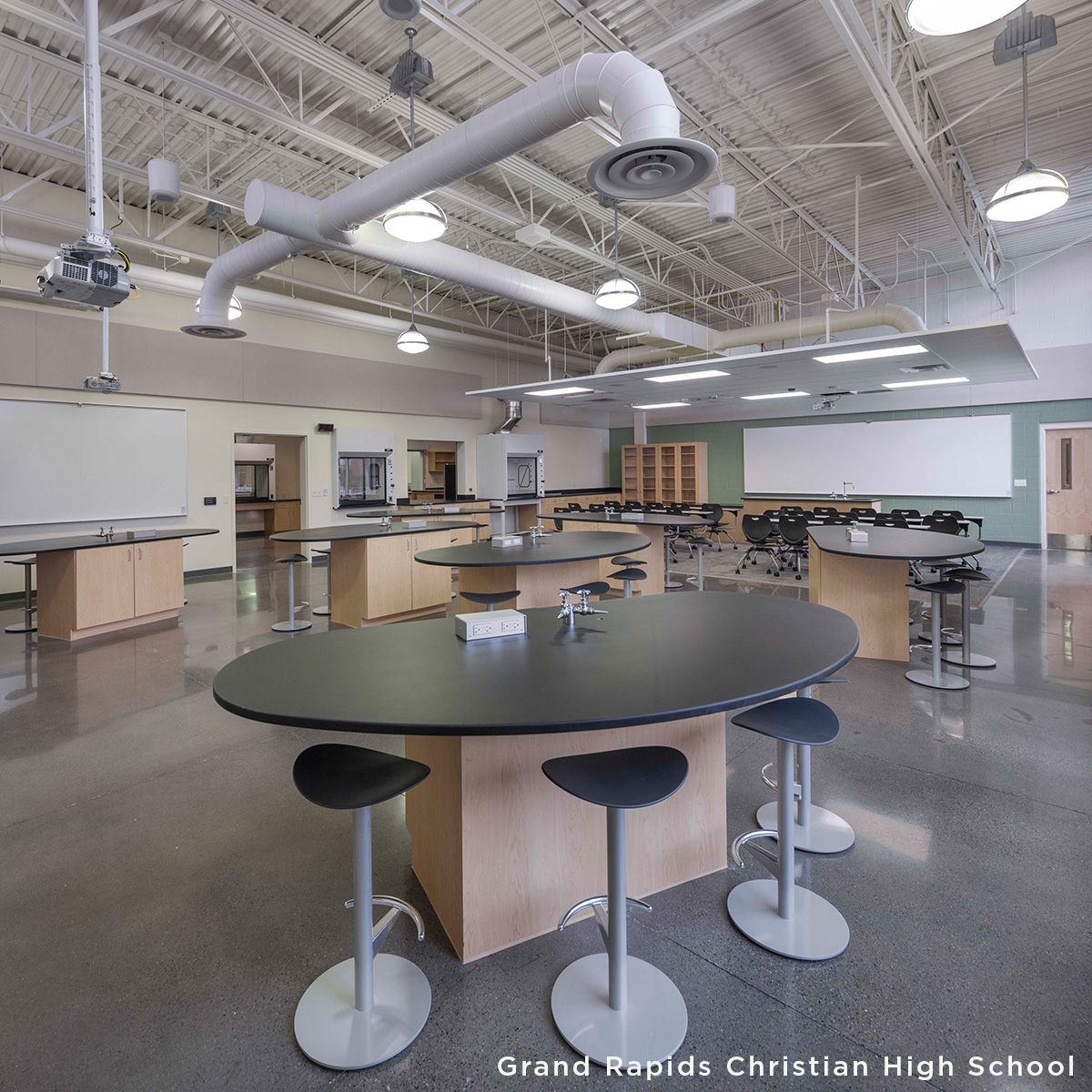STEM curriculum is at the forefront of district, educator, and parent minds. While the emphasis on these programs is not novel, how education space facilitates STEM learning and teaching has become the subject of scrutiny.
A recent study suggests that the function of learning spaces has a high influence on overall student academic outcomes. Student-centered learning is changing the way educators deliver instruction, and design of education spaces has shifted from teacher-focused to student-focused to support hands-on, project-based pedagogy.
Rockford has the expertise in constructing spaces that are more adaptable and support a variety of student learning. While STEM programs look unique to each district, our team can guide you through budget and design considerations to create a space that inspires student creativity, collaboration, and critical thinking, is sustainable, and economical as well.
Whether new construction or renovation, your budget is precious. Our team can assess current conditions and equipment to provide reliable estimates and value management solutions to ensure high-quality, high-performance facilities that are also cost-effective. We will work with you to understand your curriculum, what activities will be hosted in that space, whether it will be utilized for a variety of uses such as after-school and community programs, and more, to ensure that design and the preliminary budget are in line with each other.
Districts may also have opportunities to receive funding for STEM spaces, and there are a variety of nationwide resources aiding educators in expanding STEM courses. Rockford can support your budget throughout the fundraising cycle, coordinating donations or gifts-in-kind. We will ensure you receive maximum value for your construction dollar.
Considering renovating an underutilized or outdated space, such as former media centers or gyms, can also reduce strain on your budget. Updating flooring by removing carpet or using a movement-friendly surface, furniture that encourages group and hands-on learning and can be easily moved, and technology, such as an interactive display, can transform underutilized spaces into dynamic learning facilities while reducing overall costs.
Other design considerations may include:
- Storage spaces to house different equipment and technology
- Arrangements of the space and furniture to allow ease of movement throughout the room
- Multi-functional furniture and equipment such as markerboard tables or seating with outlets
- Mobile furniture and equipment such as desks and chairs on wheels
- Design elements such as magnetic surfaces
- Partition walls to separate different courses or activities as needed
- Access to water, sunlight, electricity and other utilities
- Technology such as interactive TV displays, computers, tablets and 3D printers; a reliable network
While STEM spaces should be mobile, flexible, modular, and inspire collaborative and critical learning, these spaces should also be sustainable to provide maximum return on investment.
Sustainability is an important part of STEM curriculum and a sustainable classroom, with STEM spaces reducing both utility and operational costs when built “green.” Sustainable classroom design utilizes features such as natural lighting, high-efficiency HVAC systems and responsibly sourced or recycled construction materials to benefit not only those who will use the facility but will also benefit the planet.
STEM education is essential to preparing students for the future, especially considering that STEM jobs are expected to grow by 8% until 2029. While the Department of Education recently invested $540 million in STEM education, STEM learning opportunities are still not readily available at the K-12 level – with this disparity larger for girls and students of color. Constructing STEM facilities where students are increases access, resulting in more opportunities for learning, whether that be during the school day, after-school programs, or summer camps. Rockford will partner with you to create budget-friendly STEM spaces in support of your students’ future.




















